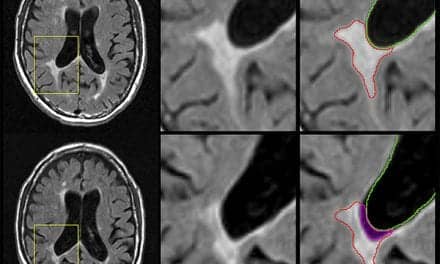 Conventional medical imaging wisdom relegates functional magnetic resonance imaging (fMRI) to the scientific research arena. It may not be long, however, before fMRI goes mainstream and hits the local, neighborhood radiology department.
Conventional medical imaging wisdom relegates functional magnetic resonance imaging (fMRI) to the scientific research arena. It may not be long, however, before fMRI goes mainstream and hits the local, neighborhood radiology department.
Peter Luyten, Ph.D., senior director MRI business development for Philips Medical Systems (Bothell, Wash.), lays the “fMRI is limited to the research setting” myth to rest. “You don’t need a Ph.D. to do these types of studies. You can do them in a normal radiology setting.”
Luyten predicts, “fMRI will be mainstream before you know it.” And Luyten isn’t alone in his assessment. Joy Hirsch, Ph.D., professor of neuroscience and head and director of fMRI for Memorial Sloan Kettering Cancer Center (New York City), says, “In the next few years the use of fMRI for neurosurgical planning is going to be mainstream. Every radiology department will be expected to do it because they can do it.” In fact, Hirsch speculates that in the future a hospital that fails to utilize fMRI in neurosurgical planning might find itself on the wrong end of a lawsuit if a patient loses a critical function after surgery.
Neurosurgical planning may be just the tip of the fMRI iceberg. Researchers are exploring a host of other avenues for the technology. Potential future clinical applications of fMRI include assessing stroke patients’ recovery, monitoring patients with degenerative brain disease and evaluating children with learning disabilities.
A Short History of fMRI
In scientific terms the lifespan of fMRI is incredibly short. The technology was developed in the late 1980s and early 1990s when scientists discovered the blood oxygen level dependent (BOLD) signal. As a subject completes a particular task, an MRI scanner measures blood flow change to the part of the brain responsible for performing that task. Hirsch recalls, “When doctors found the BOLD signal it was a storm that hit neuroscience and basic medical applications. Functional imaging has really revolutionized the way we think about imaging the brain.” Instead of merely imaging the structure of the brain, fMRI provides a non-invasive look at how the brain actually works.
One basic fMRI application is mapping critical brain functions, such as language and motor skills. fMRI, in fact, proved to be an ideal tool for mapping the human brain, and its utility for brain mapping is one reason behind its relatively rapid acceptance. Prior to the development of fMRI, the dominant modality at the annual Human Brain Mapping meeting was positron emission tomography (PET), but in less than four years fMRI became the dominant modality at the meeting. Luyten acknowledges, “It’s not often that a competitive modality takes over that quickly. Sometimes a new technology can take 20 years to gain acceptance.”
Please refer to the July 2002 issue for the complete story. For information on article reprints, contact Martin St. Denis





